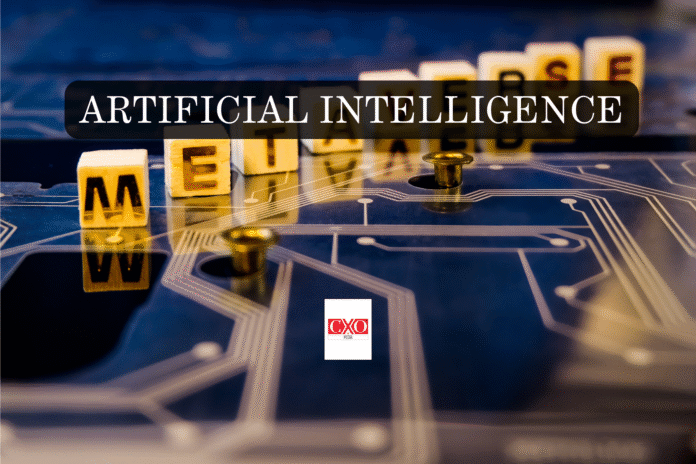Generative AI (Gen AI) has quickly come into play as standard workplace tools like email and office software. Companies everywhere are exploring and adopting gen AI technologies at an impressive pace, with approximately eight out of ten organizations already incorporating some form of AI into their daily operations. However, beneath this widespread enthusiasm lies a notable disconnect—despite significant investments and high expectations, most companies are yet to see meaningful, measurable results from these AI initiatives. This troubling reality has been described by industry experts as the “gen AI paradox.” Essentially, it captures the frustrating scenario where excitement around AI’s potential vastly outpaces the actual economic benefits delivered. In fact, recent research indicates that over 80 percent of companies currently report no significant boost to their earnings despite actively implementing generative AI solutions.
So, what’s causing this gap between promise and payoff? Primarily, companies have focused on easy-to-implement, broad-use solutions that, while useful, offer only incremental improvements. They have often overlooked integrating more specialized, deeply impactful AI solutions that target specific business processes. As a result, the transformative potential of gen AI remains largely unrealized. To bridge this gap, organizations must shift their approach from superficial adoption to strategic integration, deeply embedding AI within core business operations to truly unlock its full potential.
Understanding the Gen AI Paradox
The paradox surrounding generative AI implementations stems primarily from how most businesses initially chose to integrate this powerful technology. Captivated by the immense promise of AI, organizations swiftly adopted broad, enterprise-wide solutions such as chatbots and digital assistants, commonly referred to as copilots. The allure of these “horizontal” solutions lies in their simplicity and ease of deployment—often requiring little more than activating an extension within existing software systems. However, the seemingly straightforward benefits of these generalized tools can be misleading. Their widespread use mainly supports routine tasks and marginally boosts individual employee productivity. While these incremental improvements are genuine, their diffuse nature means they rarely coalesce into significant, visible impacts on overall company performance or profitability.
Conversely, “vertical” or function-specific AI solutions—those designed explicitly to integrate deeply within targeted business processes—hold substantial potential to deliver tangible, meaningful outcomes. These specialized applications directly address complex challenges within particular departments or workflows, improving efficiency, enhancing decision-making, and contributing significantly to business results. Yet, despite their clear benefits, these targeted AI solutions frequently struggle to move beyond initial pilot phases. In fact, fewer than 10 percent ever advance past preliminary testing stages, often stalled by systemic organizational and technological hurdles. The barriers preventing the broader adoption of vertical AI solutions are numerous. Fragmented and isolated initiatives lacking cohesive oversight typically struggle to scale. Additionally, the market remains sparse in mature, ready-to-deploy solutions tailored to specific business needs, forcing organizations into costly custom developments. Technological constraints, particularly regarding the evolving capabilities of advanced AI models, pose significant limitations, alongside persistent issues with data quality and management. Furthermore, internal cultural resistance and organizational inertia frequently complicate matters, as employees grapple with uncertainty regarding AI’s role and impact on their jobs.Addressing these barriers is essential. By strategically shifting from superficial deployments toward comprehensive integration of specialized AI applications, companies can unlock the true transformative potential of AI, turning initial enthusiasm into measurable, impactful business success.
Agentic AI: From Paradox to Payoff
Agentic AI represents a significant advancement in generative AI technology, uniquely designed to resolve the inherent limitations of earlier implementations. At its core, agentic AI introduces autonomy, memory, strategic planning, and adaptability into traditional AI frameworks, transforming them from mere reactive tools into proactive and purposeful collaborators. Unlike previous generations of passive digital assistants, or “copilots,” agentic AI systems actively anticipate challenges, manage complex tasks independently, and seamlessly interact with human colleagues and various technological infrastructures. This capability elevates AI from being simply an operational aid to becoming a genuinely strategic business asset capable of driving substantial organizational transformation.
The most powerful aspect of agentic AI lies in its ability to engage proactively rather than merely respond to commands. By combining memory and strategic planning, these advanced systems can effectively handle intricate business workflows. They navigate through multiple task sequences, making informed decisions along the way and adapting their strategies as situations evolve. The seamless integration with other systems and direct interactions with humans ensure that agentic AI does not operate in isolation but becomes an integral part of the workplace ecosystem. This interconnectedness significantly enhances overall operational efficiency and responsiveness. A practical illustration of agentic AI’s potential can be seen in the case of a prominent banking institution that sought to modernize its outdated legacy systems. Traditional modernization projects often involve extensive manual processes, including documentation, coding, and integration tasks that can be laborious and prone to errors. By implementing agentic AI, the bank strategically reorganized its workflow, assigning AI agents to work in collaborative teams—or “squads”—responsible for automating critical aspects such as documentation, software coding, and system integration. Human employees, in turn, moved to supervisory roles, overseeing the operations and focusing on strategic oversight rather than routine tasks.
The outcomes of this hybrid approach were remarkable, achieving more than a 50 percent reduction in both the time and effort previously required using conventional methodologies. This significant improvement underscores agentic AI’s capability to proactively identify and address complex issues, reinforcing its role not merely as an operational tool but as a pivotal component in shaping strategic business success.
Operational Transformation and Revenue Opportunities
Agentic AI represents a significant advancement in generative AI technology, uniquely designed to resolve the inherent limitations of earlier implementations. At its core, agentic AI introduces autonomy, memory, strategic planning, and adaptability into traditional AI frameworks, transforming them from mere reactive tools into proactive and purposeful collaborators. Unlike previous generations of passive digital assistants, or “copilots,” agentic AI systems actively anticipate challenges, manage complex tasks independently, and seamlessly interact with human colleagues and various technological infrastructures. This capability elevates AI from being simply an operational aid to becoming a genuinely strategic business asset capable of driving substantial organizational transformation. The most powerful aspect of agentic AI lies in its ability to engage proactively rather than merely respond to commands. By combining memory and strategic planning, these advanced systems can effectively handle intricate business workflows. They navigate through multiple task sequences, making informed decisions along the way and adapting their strategies as situations evolve. The seamless integration with other systems and direct interactions with humans ensure that agentic AI does not operate in isolation but becomes an integral part of the workplace ecosystem. This interconnectedness significantly enhances overall operational efficiency and responsiveness.
The real power of agentic AI goes beyond improving operational efficiency; it actively drives revenue growth and creates new business opportunities. On an operational level, these intelligent agents speed up task completion by eliminating delays between steps and enabling multiple processes to run simultaneously. Their real-time adaptability allows for dynamic reshuffling of tasks based on priority, which greatly enhances organizational resilience and responsiveness. For instance, in supply chain operations, agentic AI systems autonomously manage inventory levels, forecast demand accurately, and even conduct real-time negotiations for transportation logistics. These capabilities significantly reduce operational costs and improve sustainability efforts. Moreover, agentic AI has opened the door to entirely new revenue streams that were previously impossible with traditional gen AI solutions. Within e-commerce, AI agents embedded directly into online platforms proactively analyze customer behaviors, identifying personalized upselling and cross-selling opportunities as they emerge. In financial services, agents use predictive analytics to recommend tailored financial products such as loans, insurance plans, or investment opportunities, enhancing customer experiences and driving new sales. These proactive, context-sensitive opportunities are beyond the reach of traditional generative AI, which typically operates in a more isolated and reactive mode.
Architecting the Future: The Agentic AI Mesh
Realizing the transformative potential of agentic AI involves much more than making incremental technological improvements. To truly harness the power of agentic AI, organizations must fundamentally rethink their approach to AI infrastructure by adopting what McKinsey describes as the “agentic AI mesh.” This new architectural framework is explicitly designed to be “composable, distributed, and vendor-agnostic,” allowing organizations to smoothly integrate diverse AI agents across multiple platforms and systems. By embracing this approach, businesses can effectively adjust their AI deployments dynamically, scaling up or down according to evolving needs without getting trapped in technology lock-ins or becoming outdated due to rapid tech advancements. At its core, the agentic AI mesh emphasizes composability, a feature that allows different AI agents to effortlessly plug into existing systems and processes. This seamless integration capability ensures minimal disruption and maximum efficiency, enabling businesses to leverage their current technology investments while rapidly adopting advanced AI capabilities. Furthermore, distributed intelligence is a critical feature of this mesh, empowering multiple agents to collaborate effectively, handle complex tasks collectively, and distribute workloads evenly across various components of the infrastructure.
Another key benefit of the agentic AI mesh is its layered decoupling, a structural design that ensures different elements of the AI system—such as logic, memory, orchestration, and user interfaces—remain distinct yet closely coordinated. This separation helps prevent complications during system updates or replacements, ensuring continuous operation and facilitating rapid response to new technological innovations. Additionally, vendor neutrality ensures that organizations are not overly dependent on any single technology provider. This flexibility safeguards them against market volatility and technological obsolescence. Crucially, the agentic AI mesh incorporates governed autonomy, which actively manages and monitors the actions of AI agents. This approach ensures that the agents operate transparently, with clearly defined boundaries and guidelines, thus minimizing risk and avoiding operational chaos. Such proactive governance ensures systemic resilience and maintains organizational stability, even as agents autonomously handle increasingly complex tasks. By combining these elements, the agentic AI mesh lays a robust foundation that enables businesses to capitalize fully on the transformative capabilities of agentic AI.
The CEO’s Role: Pivoting from Experimentation to Strategic Implementation
Perhaps the most crucial insight from the McKinsey report is the vital role that CEOs must play in transitioning their organizations from scattered AI experiments to cohesive, strategic implementations. This shift isn’t merely about technology; it requires CEOs to actively lead and manage a fundamental organizational transformation. According to the McKinsey report, CEOs must “conclude the experimentation phase and realign AI priorities” by clearly identifying and investing in processes and domains that offer the greatest strategic value and impact. This transition involves not only setting clear priorities but also establishing a structured framework that aligns AI with core business objectives. Furthermore, effective leadership extends beyond strategic direction; it demands active participation in reshaping the organization’s operational model. CEOs need to lead cross-functional teams—often referred to as transformation squads—that bring together experts from AI, IT, data governance, and core business functions. These teams collaborate to ensure that AI solutions are deeply integrated into the company’s existing systems, workflows, and operational structures, creating a cohesive environment where AI can thrive and deliver tangible results.
Equally important is the role of CEOs in driving cultural and workforce transformation. As AI technologies become more autonomous and integrated into daily workflows, CEOs must cultivate a culture that supports seamless human–agent collaboration. This cultural shift is critical to maximizing the potential of agentic AI. It involves preparing employees to interact effectively with AI agents, ensuring they understand, trust, and feel empowered by these tools. Companies will need new skills and specialized roles to manage this transition effectively. Roles such as “prompt engineers”—who optimize interactions with AI systems—and “agent orchestrators”—who oversee agent-driven workflows—will become indispensable. In summary, the CEO-driven approach outlined in the McKinsey report transforms agentic AI from merely an intriguing technology to a critical strategic asset. By clearly articulating a vision, driving integration across business functions, and fostering a supportive culture, CEOs can ensure that their organizations fully realize the transformative potential of AI. This strategic leadership will ultimately determine whether organizations merely adopt agentic AI or harness it to drive significant business success.
Strategic Crossroads—Time for Action
The emergence of agentic AI isn’t just another technological advancement; it represents a profound shift in how businesses operate strategically. Today, CEOs and leaders find themselves at a pivotal junction. While initial experimentation with AI has provided valuable insights, these efforts haven’t yet translated into substantial results. Now, more than ever, decisive action and strategic clarity are essential. Organizations must move swiftly from experimental phases to strategic, structured integration of AI technologies into their core operations. Those who proactively embrace the capabilities offered by agentic AI—focusing on robust governance, advanced infrastructure, and comprehensive workforce readiness—will not only transform their internal processes but also significantly enhance their competitive positioning. This shift involves more than adopting new technologies; it demands a holistic restructuring of organizational priorities, processes, and culture.
Leaders must guide their teams beyond mere exploration toward purposeful, well-defined applications of agentic AI. They must foster a corporate environment that supports innovation, encourages adaptability, and prioritizes clear, strategic objectives. Emphasizing the importance of swift and meaningful action, the McKinsey report underscores the urgency facing modern businesses, succinctly stating: “The time for exploration is ending. The time for transformation is now.” With the right strategic focus and organizational commitment, CEOs can ensure their companies not only keep pace with technological advancements but leverage them effectively to achieve tangible business outcomes.





